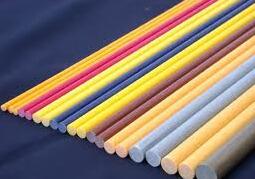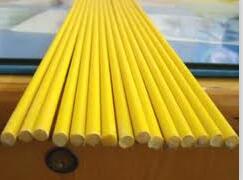Problems existing in 2-130m ventilation network and analysis The ventilation system of the original operation is a ventilation network of -130m or more. The network system was put into operation in 1995, using the network form of the four-stage station, and the network system. Among them, the Class I station is the total intake of the system, the Class II station is the returning wind, the Class III station is the returning area of ​​the mining area, and the Class IV station is the total return air of the network system. Class I, III, and IV mainly overcome mine resistance, and Class II starts to divide wind and guide. The intake wells are the central auxiliary shaft, the west auxiliary shaft, the east auxiliary shaft, the return air shaft, the 1, 2 return air well, the 206 well, the Xinxi return air shaft and the central main well. The central auxiliary shaft I-class station-130m level is two K55-13 type fans in parallel, the -200m level is one K40(A)-11 type fan, and the west auxiliary shaft-130m level is two sets K40(C)-19 The fans are connected in parallel, one K40(A)-13 type fan at -200m level, the K40(B)-11 type fan at stop site II level, and the K40(A)-11 type for class III station The fans are connected in parallel; the Xinxi total return air wells are connected in parallel with 3 K40(A)-15 type wind shafts, and the 1st, 2 return air shafts and IV level machine stations are 1 K40(A)-13 type wind turbine. The capacity is 880kW. After being put into operation, the air volume distribution ratio of the I, II, III mining area design is 3:3:1, and the actual air volume distribution ratio is 1:4:4, the actual air volume distribution is greatly deviated from the work. The amount of air required. After comprehensive analysis, the main problems of the network system are: the system has a low effective air volume rate, the air volume does not meet the design requirements, and the fan fan operates inefficiently. The reasons for the undesirable ventilation network in operation are as follows. (1) The damper sealing management of the central and auxiliary shaft bottom yards in the main middle section is not strict. Due to the frequent pedestrians and passing vehicles, the damper is ineffective and has been turned on for a long time. Because there is no effective barrier to the damper. -60m return air level part of the dirty wind through the central auxiliary downhole string to -130m and -200m air intake level; on the other hand, the downhole yard I level station should directly enter the stope of the new 26Page2 fresh air flow directly back to the I level Station. After testing, 70% of the air volume in the central auxiliary shaft I station is circulating wind. (2) The resistance of the return air section of the network system is large. In some of the stope return wells, the overflow section was reduced due to the landslide and the return air was weak. The Class III return air blower station of the 206 equipment wells in the design was not installed, and the Class II stations failed to be constructed according to the design requirements. It is difficult to meet the design requirements. (3) The effective airflow rate of the network system is low, and the accounting value is 70.66%. (4) There is a problem in the manufacturing quality of the wind turbine used in the network system. There is a general difference between the fan characteristic curve and the sample curve, resulting in a decrease in fan operating efficiency. (5) The fan operating parameter selection does not match. For example, the operating parameters of the fans of each class II station should be determined according to the design regulations, depending on the required air volume and the negative pressure, and the actual fan operating parameters are selected for practical management. (6) The Class II station is installed in the return air well of each section. It is difficult to install and maintain, and the labor intensity is high. The human factors in the stope are freely stopped and adjusted, resulting in chaotic flow in the segmental level, fresh wind and The sewage is connected in series, the system is unstable, and the reliability is poor. Due to the above-mentioned influencing factors, the network system not only causes a large waste of operation, but also cannot meet the production demand due to the insufficient return air volume of the network system and the unreasonable wind distribution between the mining areas. Therefore, it is necessary to carry out technical transformation of its ventilation network system. -130m ventilation network system 3-200m horizontal ventilation network and its operational characteristics The technical transformation of the ventilation network system was implemented, and the following work objectives were determined. (1) The four-stage station mode of the ventilation network system is changed to the two-stage station mode. In 1997, he commissioned the Institute of Ventilation and Dust Environmental Assessment of the Institute of Safety and Environmental Protection of the Ministry of Metallurgical Industry to design and change the four-stage station to the second-level station. According to computer simulation, the model is considered feasible. (2) The station fan provided in the network system is preferred. Use existing stock fans as much as possible, as performance allows. Wuhan Safety and Environmental Protection Research Institute selects existing stock fans through the selection of analog fan parameters. (3) Optimize the network of the ventilation system, straighten out the wind path, eliminate the problem of air circulation circulation at the bottom of the central auxiliary shaft and achieve energy saving. The modified -200m horizontal ventilation network system was put into operation in 1998, the network system.
There are many kinds of FRP profiles, such as FRP round pipe, FRP square pipe, FRP rectangular pipe, FRP round bar and FRP i-bar.
The basic components of FRP profile are resin and glass fiber (including cloth, felt, etc.). It is reinforced with fiber (including glass fiber, carbon fiber, organic fiber and other metal, non-metal fiber) and resin (mainly epoxy resin).Polyester resins, phenolic resins) are composite of other auxiliary materials (main auxiliary materials: mold release agent, curing agent, catalyst, sealing agent, UV light stabilizer, mold cleaning water, gel coat, etc.).It has high temperature resistance, corrosion resistance, high strength, low specific gravity, low moisture absorption, small extension and good insulation and other excellent characteristics.
Fiberglass Rod,Solid Fiberglass Rods,Flexible Fiberglass Rods,Hollow Fiberglass Rod Hebei Long Zhuo Trade Co., Ltd. , https://www.hblongzhuo.com

